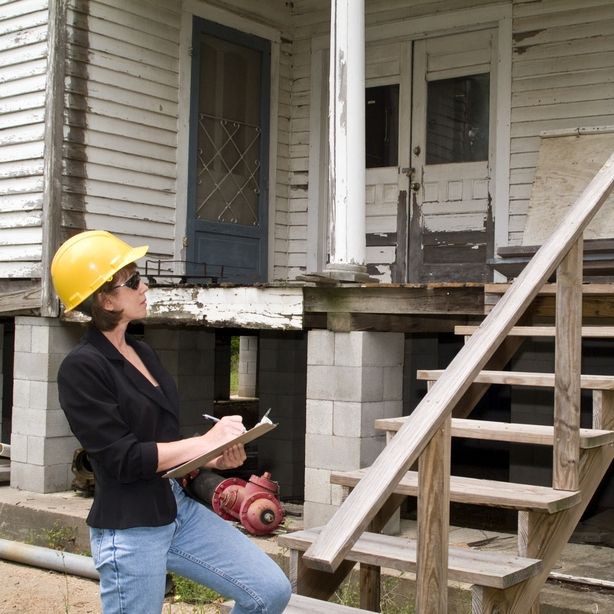What Is Included in a Detailed Building Inspection Process?
An extensive home evaluation process is crucial for securing investments and ensuring safety. It incorporates a careful evaluation of architectural stability, electric systems, pipes, and A/c devices, among various other crucial parts. What, then, are the most important elements that can make or damage a residential or commercial property analysis?
Overview of Residential Property Inspection

The examination includes numerous essential locations, consisting of the exterior and interior elements, systems such as pipes and electrical, and any kind of visible architectural elements (Phoenix property inspections). Throughout the procedure, the examiner documents the problem of these aspects, searching for signs of wear, damages, or potential hazards
A detailed building evaluation not just assists possible buyers make notified choices yet also aids present proprietors in comprehending necessary repair services or maintenance tasks. By giving a detailed record of searchings for, the evaluation makes it possible for stakeholders to prioritize concerns that may call for immediate interest or could impact future financial investment.
Furthermore, an effective assessment process sticks to developed sector criteria and guidelines, making sure a trusted and consistent evaluation. In general, the building inspection process is an important tool in genuine estate transactions, promoting openness and guarding both customer and vendor rate of interests.
Structural Assessment

During the assessment, specialists assess various components, including the structure, framework, walls, and roofing system systems. They seek indications of clearing up or changing, such as splits in wall surfaces or uneven floors, which can symbolize underlying concerns. The analysis likewise entails examining the high quality of building materials and methods utilized, guaranteeing compliance with building regulations and requirements.
Furthermore, examiners may look for indications of wetness invasion, which can cause timber rot and mold, further compromising structural integrity. They additionally evaluate load-bearing elements to guarantee they can sufficiently support the weight of the building and its materials.
Eventually, a complete structural evaluation gives very useful insights for prospective customers and house owners, allowing them to make informed decisions pertaining to residential property financial investments and needed upkeep. By determining structural concerns early, proprietors can attend to problems proactively, preserving the lasting value and safety and security of the property.
Electric System Analysis
An efficient electrical system assessment is vital in the residential property evaluation procedure, as it evaluates the safety and security, functionality, and conformity of a building's electrical facilities - Best home inspections. This assessment usually incorporates an extensive exam of the major electrical panel, circuit breakers, and wiring systems. Examiners look for indications of wear, deterioration, or damage that may compromise safety
The analysis consists try here of testing for adequate grounding and bonding, guaranteeing that the electric system is properly linked to prevent electric shock or fire hazards. Inspectors also assess the capacity of the electric system to take care of the existing lots, recognizing any type of prospective overwhelming issues that could result in failures or failures.
Additionally, the assessment checks for the visibility of GFCI (Ground Mistake Circuit Interrupter) and AFCI (Arc Mistake Circuit Interrupter) gadgets in proper places, which are crucial for securing versus electrical shocks and avoiding fires. Compliance with regional building regulations and guidelines is additionally validated to make certain that any kind of installations or adjustments satisfy safety and security standards.

Plumbing and A/c Checks
Following the electrical system analysis, the plumbing and heating and cooling checks are important parts of the residential or commercial property assessment procedure. These analyses ensure that the important systems of the residential property are operating effectively and securely, thereby safeguarding the investment and wellness of the owners.
Throughout pipes examinations, specialists examine the problem of pipelines, fixtures, and drainage systems. They look for leakages, deterioration, and review any type of indications of water damage that can show larger issues. The efficiency of hot water heater is additionally examined to ensure they meet existing requirements and offer adequate warm water supply.
The cooling and heating checks include an extensive evaluation of heating, air, and ventilation conditioning systems. Assessors will assess the operational effectiveness of these systems, guaranteeing that they maintain a comfy indoor atmosphere. This includes examining the furnace, air ductwork, conditioner, and thermostat capability. Furthermore, the inspector will seek any type of indicators of wear or prospective safety and security risks, such as carbon monoxide gas leaks in heating unit.
Outside and Interior Examinations
Exterior and interior examinations are vital facets of the home examination process, supplying a thorough summary of a property's condition. The external inspection involves assessing architectural components such as the roof, exterior siding, foundation, and home windows. Examiners try to find indicators of wear, damages, or possible risks, including water check this invasion, mold and mildew development, and parasite problems. They additionally assess the surrounding landscape, guaranteeing appropriate drain and determining any type of trees or plants that might intimidate the property.
The indoor examination concentrates on the problem of living areas, including walls, flooring, and ceilings. Examiners analyze the functionality of devices, doors, and windows, while likewise checking for signs of moisture or architectural concerns. Electrical systems, pipes components, and heating and cooling units are scrutinized to guarantee they are in working order, certified with building regulations, and without security threats.
Both evaluations finish in a comprehensive record that highlights vital searchings for and referrals for repairs or further examinations. This double approach makes certain that possible customers or proprietors are fully informed concerning the residential property's strengths and weaknesses, allowing them to make educated decisions.
Conclusion
To conclude, a detailed home assessment procedure includes an extensive assessment of structural stability, electric systems, pipes, and HVAC units, together with in-depth outside and indoor examinations - Commercial property inspections. By methodically analyzing each critical component, potential safety risks and compliance with industry standards and regional building codes can be determined. The resultant in-depth record acts as an essential source, encouraging customers and home owners to make informed decisions regarding residential or commercial property investments and maintenance, inevitably boosting safety and security and worth
A comprehensive property evaluation process is vital for securing investments and guaranteeing safety and security.Throughout the examination, specialists analyze numerous parts, including the foundation, framework, wall surfaces, and roofing system systems.An efficient electric system evaluation is important in the home evaluation process, as it reviews the security, functionality, and conformity of a building's electric facilities.Exterior and indoor evaluations are crucial aspects of the property assessment process, giving a thorough summary of a residential property's condition.In verdict, a detailed residential or commercial property examination process includes a comprehensive evaluation of architectural integrity, electric systems, plumbing, and A/c units, along with comprehensive outside and interior examinations.